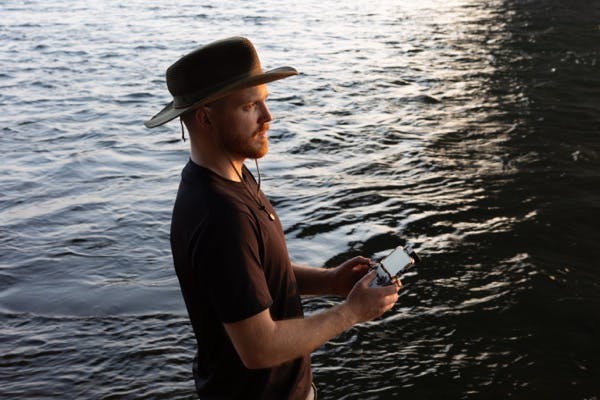Interview
María Paula Fernández in conversation with Jonathan Chomko
Jonathan Chomko is methodic, calm, pleasant and is flowing through life. The last time we met, we had ramen in Berlin before visiting the latest Trevor Paglen exhibition Hide the Real, Show the False.
Our meeting was merely hours away from his new artwork’s release, the last one in the Proof of Work series, Red Blue Center. Jonathan had been producing the outputs for his exhibition and subsequent drop in the Office Impart gallery in Wedding Berlin. Producing the work, based on his concept, had him sitting on his computer, constantly clicking his trackpad to produce the images through custom software. On that launch day, Jonathan told me he was nervous as he was taking a risk in releasing a small edition of artworks at somewhat high prices during a convoluted market period. He did not seem nervous at all, he seemed chill and in great spirits. The artworks sold out in less than two hours, and Jonathan went paragliding to celebrate.
Jonathan’s character is perceived very easily through his work. He has a strong connection to nature while exploring the digital realm that’s very rare in NFT artists. When some are imagining new worlds and utopia, Jonathan is exploring physical locations to perform actions in order to produce his digital work. For Natural Static, Jonathan observed and recorded water flowing, in various different locations in Montreal and New York.
With this series, Jonathan questions the desire present in much NFT work to re-create an appearance of physical materials and organic textures, while highlighting the actual texture of the screen on which it is displayed, with a resolution-responsive, pixel-shader approach which allows organic movement to flow while the pixel grain of the screen is made visible.
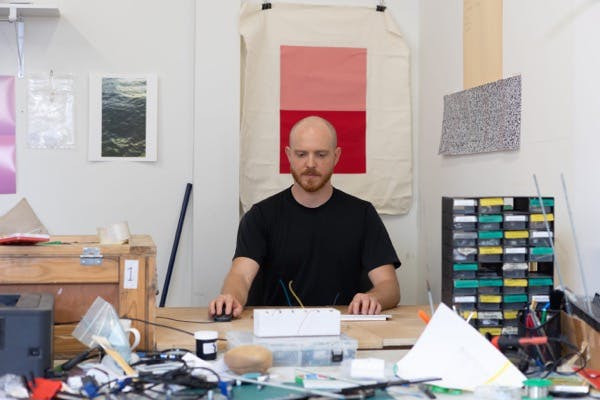
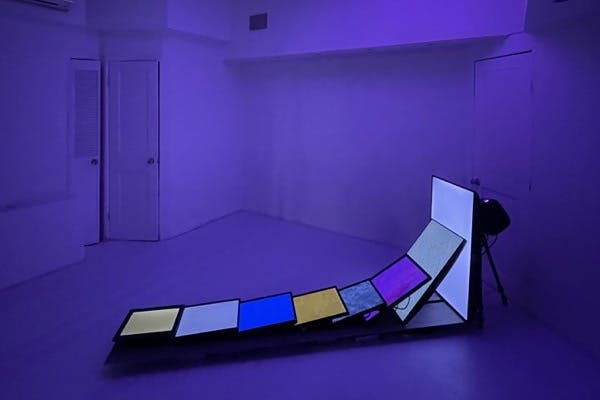
When did you come up with Natural Static? What was the intention behind it?
JC: Natural Static follows explorations I did years ago, where I generated pixel-perfect noise, and noticed how my mind would find structures patterns in the randomness. I tested blending in different sources of natural noise; video of a tree blowing in the wind, or the live feed from my webcam, trying to mix in the structured data in an almost imperceptible level.
I like this idea that our feeling of being overstimulated after spending lots of time on the computer is actually understimulation - that scrolling the computer provides fewer bits of information than being in nature with its rushing water and fluttering leaves.
I like this idea that our feeling of being overstimulated after spending lots of time on the computer is actually understimulation - that scrolling the computer provides fewer bits of information than being in nature with its rushing water and fluttering leaves.
Staring into pixel noise felt like it brought some of this complexity of the natural world into the computer - the brain is occupied pulling patterns and signals from the noise. The patterns that show up Proof of Work Binary Random could be see as the inverse of this structuring desire, lines and shapes showing up even as I attempt to produce random values.
In the same way that Proof of Work asked a certain behavior from me, my intention with Natural Static was that it would bring me away from the computer, give me the job of standing by the river and being still for a minute at a time.
The river to screen ratio didn’t end up being that high, as I also embarked on a new technical exploration in this work: shader code. Shaders allowed me to work directly with each pixel on your screen, bringing the actual material reality of the screen into the work. Each pixel in Natural Static acts as its own feedback loop, that will either sample it’s previous state or pull data from the video of water depending on a random value.
I like to think of the shader code in Natural Static as a basic water simulation, which is disturbed like the surface of water by the data in the video. Indeed, if the water video is removed after the system is started, the feedback system continues to feed back on itself and repeat the appearance of motion.
This pixel specific approach means that the screen the piece is presented on becomes an active part of the work - Natural Static will look different on an 1280x1024 monitor compared to a 4k display. The pixels all move independently, sometimes calling out their uniqueness as a bright spot on the screen, and sometimes joining an indiscernible wave of colour.
I like to think that this is an intense smushing of worlds; the immense complexity of the physical world, of river systems, river beds, wind, into the precise grid of the computer screen, like playdoh through a garlic press.


You chose a quite different path than the generative artists we stumble upon in the NFT world. What’s your take on the current state of generative art on this side of the artsphere?
JC: There are basically two generative art worlds; one that tries to express the computer aesthetic as much as possible, and another that tries to recreate the physical aesthetic as much as possible.
To be honest I’ve never felt very much affinity to either; I’ve held a position for some years that the generation of visual content is no longer the task of the artist. The work I’ve done in the past has mostly focused on capturing and transforming existing gestures, rather than creating a new visual gesture.
When I first started exploring NFTs, it felt as if participation in the market required conforming to an existing structure. I felt a sense of relief when I encountered artists working outside of these frames, such as Kevin Abosch, Mitchell F Chan and Sarah Friend.. Mitchell was very encouraging of my departure from the NFT norms, and his support helped me put out the first Proof of Work series.
I sometimes wish I wasn’t so contrarian and could just play inside the formats as they are presented, but such is my lot in life. I will say that Making Natural Static has been quite revealing of the joys of creating generative art; I’ve spent a lot of time just clicking through the randomizer, reveling in the combinations it throws up.
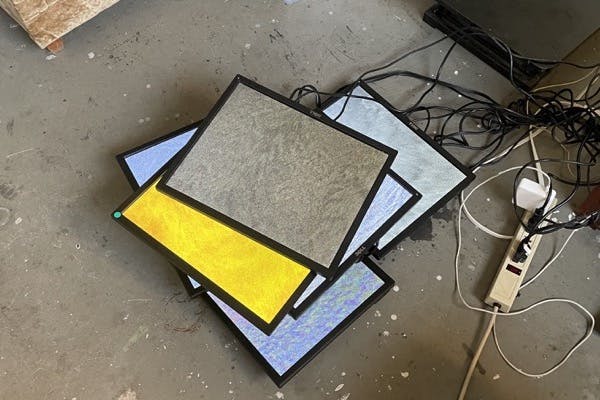
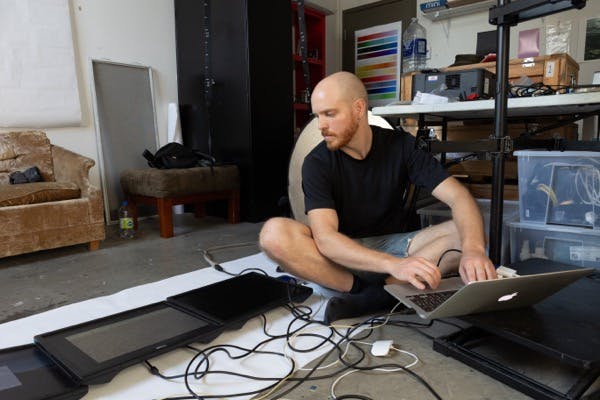
In Proof of Work, the contexts were carefully selected to add to the conceptual aspect of the work. The same with Natural Static. Why is the setting so important to you? Does it affect the final output?
JC: In Proof of Work there was some idea of making myself an instrument - that the location and the events that happen around me as I produce the work location would translate into the marks I made on the screen. This site specificity continues in Natural Static; each video is from a particular location, and the configuration of water flows, river bed rocks, weather conditions, etc, all contribute to that particular visual information.
The project is in part a response to the skeuomorphic approach of some generative NFT artists, who attempt to code works to look as if they were made using physical materials on textured paper, and the gesture I make is questioning why we’re so interested in these recreations of the natural world.
What is aesthetic online is often related to what’s difficult to produce; the web 2.0 aesthetic of rounded buttons came about because they were hard to produce in web 1.0, and so signalled that extra effort was made. On first read Natural Static might look like the work of a complex particle system; but the reality of the videos is a sort of rug pull, questioning, as in Proof of Work, the shorthands we use to assess value.
I think ultimately I hope that when people look at Natural Static, they see the abstraction present in all computer systems. When we use sine and cosine functions to simulate water, for example, we’re creating an abstraction that is without the complex variation of the natural world, and perhaps that inundation of noise is part of the calming effect of the natural world. But also I hope that it raises the question of why we are constantly recreating existing structures in our digital environments; when was the last time you had a virtual experience that was totally new, beyond any relation to our physical world?
Natural Static plays with the sense of value buyers might derive from the perceived technical skill of the artist, but it also points to how closely our virtual representations mirror the physical - When I watch the generated pieces, I feel like their rich complexity and motion reveals how abstracted digital work is; a pure sine wave doesn’t exist in nature, but it exists in the computer.
Discover the exhibition Generative Art Beyond the Algorithm curated by Brian Droitcour, and exit through the JPG gift shop to discover and purchase Natural Static by Jonathan.
